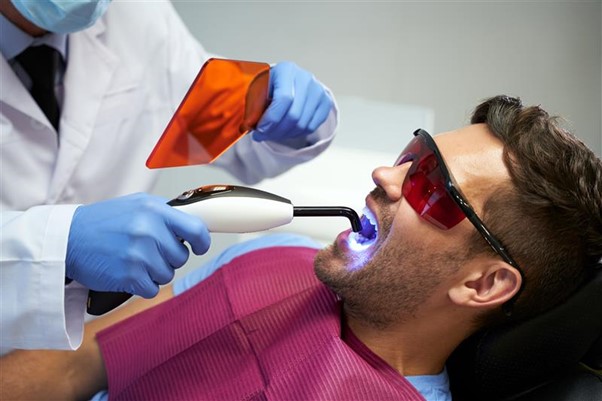Laser dental treatment is an advanced technique that uses focused light beams to perform various dental procedures. This modern approach is changing the way dentists treat patients, making procedures less invasive, more precise, and often more comfortable.
What is Laser Dental Treatment?
Laser dental treatment uses lasers to diagnose and treat different dental problems. “Laser” stands for “Light Amplification by Stimulated Emission of Radiation.” These lasers produce specific wavelengths of light that can interact with dental tissues in unique ways, allowing for very precise treatments.
Benefits of Laser Dental Treatment
There are many advantages to using laser treatment compared to traditional dental methods:
- Minimally Invasive: Lasers can perform procedures with less impact on the surrounding tissues, leading to quicker healing and less discomfort.
- Reduced Bleeding: The heat from the laser seals blood vessels, which means there is less bleeding during treatments.
- Less Pain: Many patients find laser treatments to be less painful than traditional methods, often needing little to no anaesthesia.
- Faster Recovery: Because lasers cause less trauma to the gums and other tissues, recovery times are often shorter.
- Versatile: Lasers can be used for many dental procedures, from soft tissue work to hard tissue.
Common Laser Dental Procedures:
Laser technology is used in various dental treatments, such as:
- Teeth Whitening: Lasers can help enhance the effects of whitening products, resulting in brighter teeth in less time.
- Cavity Treatment: Lasers can remove decay from teeth, allowing for more precise and less painful cavity treatments without drills.
- Gum Reshaping: Lasers can reshape gums for cosmetic reasons or to improve gum health.
- Frenectomy: Lasers can quickly and comfortably remove or adjust the frenum, the small tissue that connects the tongue to the mouth.
- Oral Lesion Treatment: Lasers can remove lesions or ulcers in the mouth, promoting faster healing.
What to Expect During Your Visit?
If you’re considering laser dental treatment, here’s what usually happens:
- Consultation: Your dentist will discuss your concerns and explain the procedure, including its benefits and risks.
- Preparation: The area may be numbed if needed, but many laser treatments require little to no anaesthesia.
- Treatment: The dentist will use the laser for the procedure. You might feel some warmth or tingling, but discomfort is generally minimal.
- Post-Treatment Care: After the procedure, your dentist will give you precautions to be taken at home. Some sensitivity may occur, but this usually goes away quickly.
- Follow-Up: Depending on the treatment, you may need a follow-up visit to check your healing progress.
Laser dentistry significantly advances dental care, offering many benefits over traditional methods. If you’re interested in laser treatments for your dental needs, talk to your dentist about the options available. With the right care, laser dentistry can improve your oral health and make your experience more comfortable.

